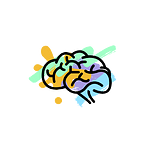Types of Learners and Study Tips for Each One
Have you ever had to take notes because it was part of the assignment and still struggled in the subject? Well, around 65.2% of students could also agree. School systems are starting to incorporate lesson styles for everyone, but in general, schools are set up to help those that are read/write learners, which means that they prefer to write down notes and read books as the main source of learning. But what about those of us that prefer pictures? Or to play out scenes from a book as a form of memorization?
In a 1992 study by Neil D. Fleeming and Coleen E. Mills, thousands of hours of classroom observation brought the acronym VARK which shows the difference between different learners — Visual, Auditory, Read/Write, and Kinesthetic learners. Each one has different preferences in methods of retaining information, and what works for one does not necessarily work for another. There are also multimodal learners, students who relate to multiple types.
Let’s start with the visual learner. They prefer pictures, diagrams, they draw and doodle. Visual learners enjoy seeing the physical connection between ideas and visualize them. Some tips would be to create presentations to retain information, making lists, and doodling diagrams to help enforce points while helping study.
The auditory learner enjoys listening to lectures, audiobooks, reading out loud, group discussions. What is heard or spoken has a higher chance of being remembered than simply read or showed in a picture. Best study tips would be reading out loud difficult sections in books, listening to audiobooks, watching videos, and having group discussions. Another tip is to speak up more in class, the questions you ask and answers you receive will help you and possibly other students which are of the same type but do not want to ask it themselves.
Read/write learners are the ones school systems are built for. They succeed more when reading books, writing down notes, writing essays, conducting research. Some study tips would be to re-read your previous notes, look up information in books or the internet.
Another type of learner is the kinesthetic learner. They perform best when they have hands-on experiences during lessons. Acting outplays, playing games, and writing information down also helps this learner, as they are physically interpreting words. The best study tip would be to create flashcards to help retain information.
Remember: these are not set-in-stone categories. 20% of students relate to two categories, 15.4% with three, and 30.6% with all four. Some study tips may help, while some are considered a chore. Do what helps you with your schoolwork, and if you find a student in need of study help, please share some tips with them as well!
Sources:
Malvik, Callie. “4 Types of Learning Styles: How to Accommodate a Diverse Group of Students.” Rasmussen University, 17 Aug. 2020, www.rasmussen.edu/degrees/education/blog/types-of-learning-styles/
“4 Different Learning Styles You Should Know The VARK Model.” University of Kansas, 31AD, https://educationonline.ku.edu/community/4-different-learning-styles-to-know
Nakano, Chelsi. “The Four Different Types of Learners, And What They Mean to Your Presentations [INFOGRAPHIC].” Prezi Blog, 29 Apr. 2016, https://blog.prezi.com/the-four-different-types-of-learners-and-what-they-mean-to-your-presentations-infographic/
“Research Statistics.” VARK, https://vark-learn.com/research-statistics/
